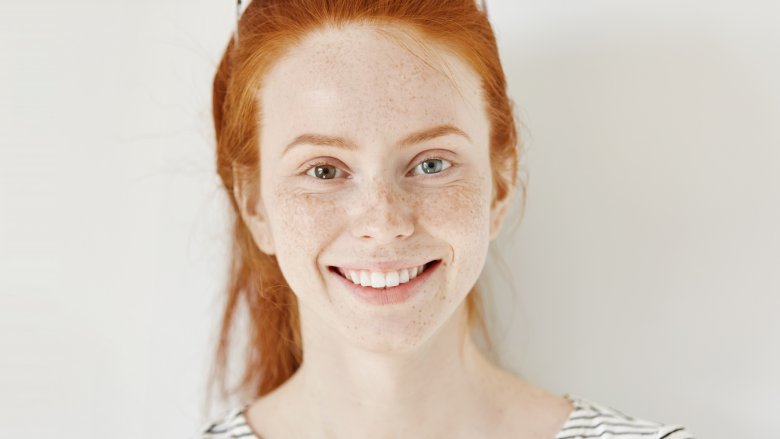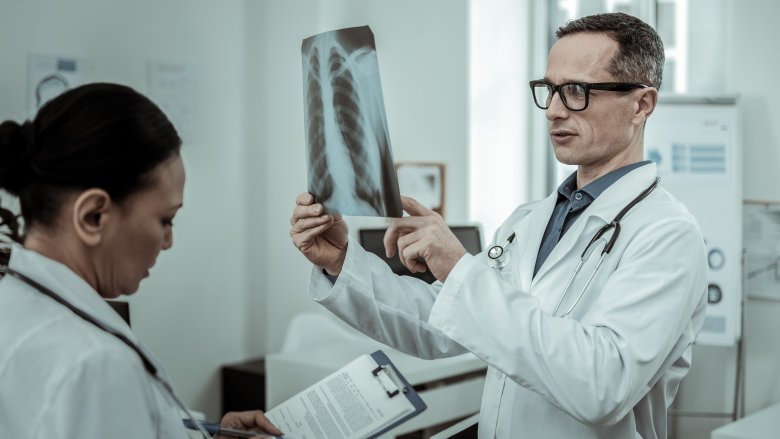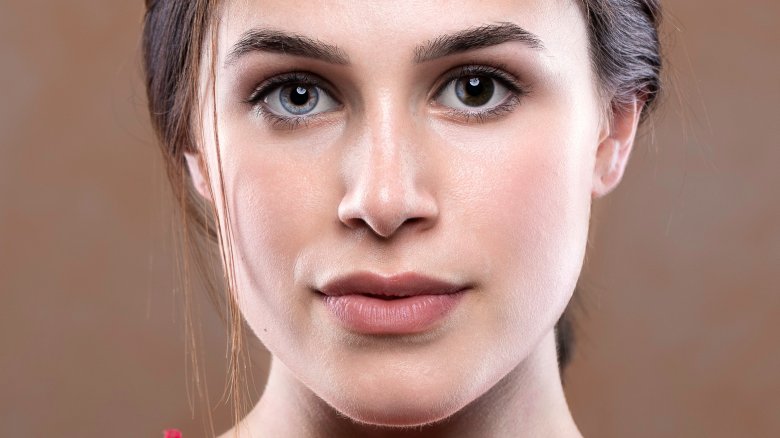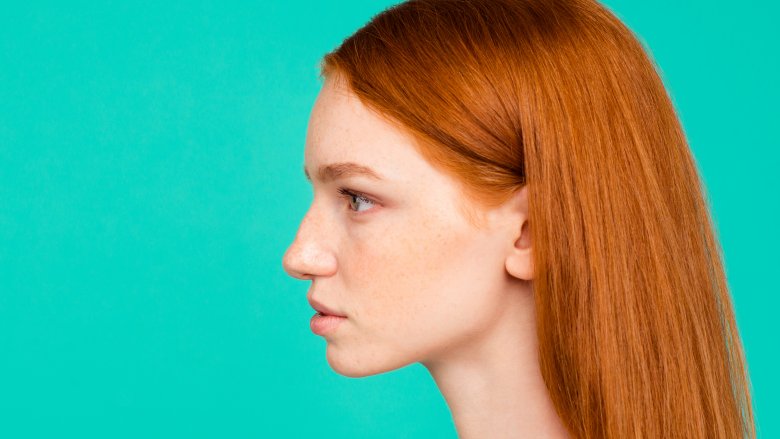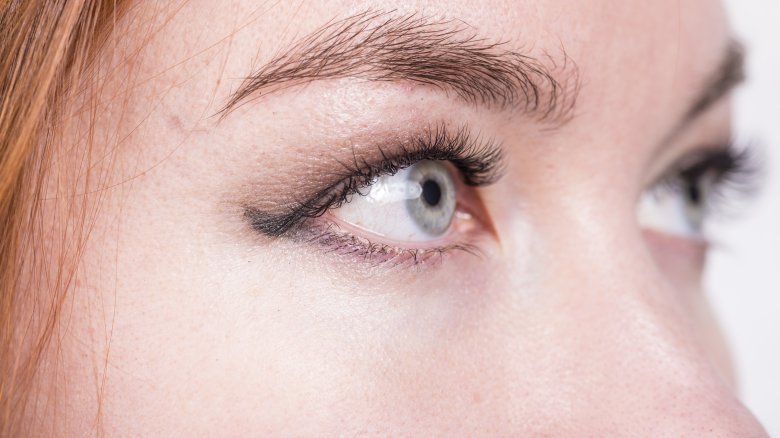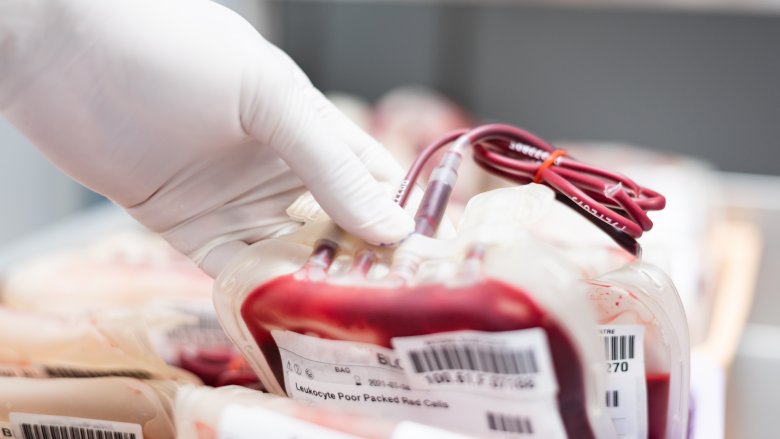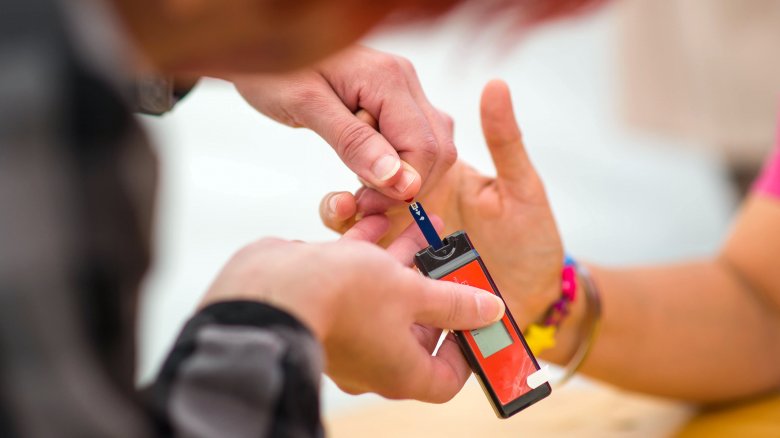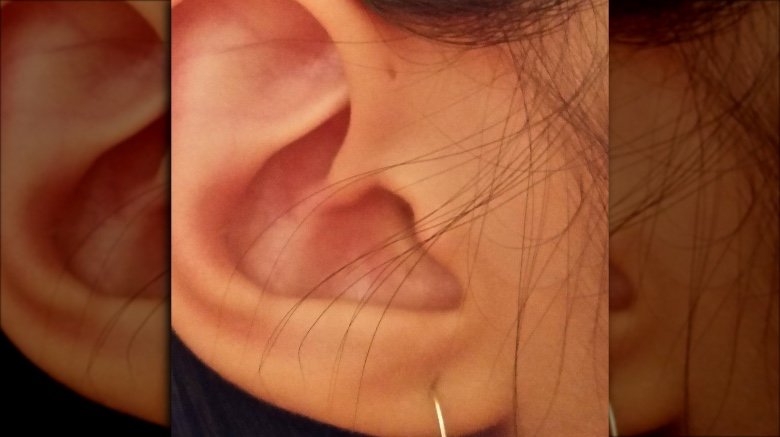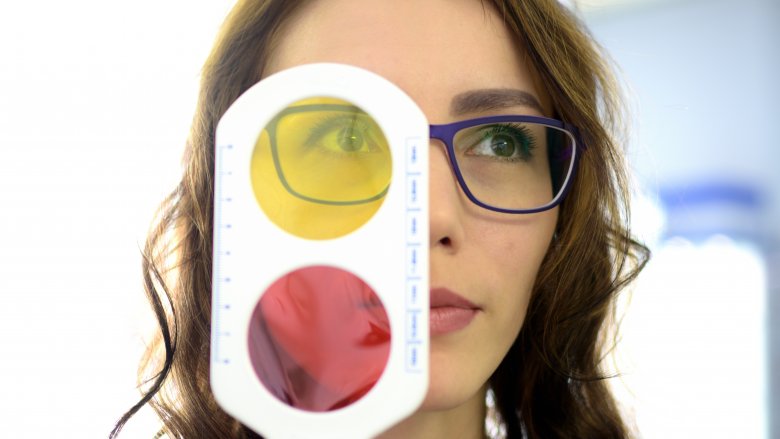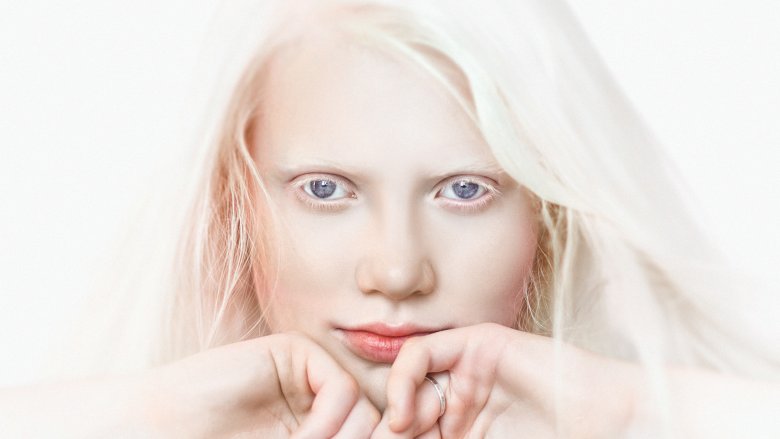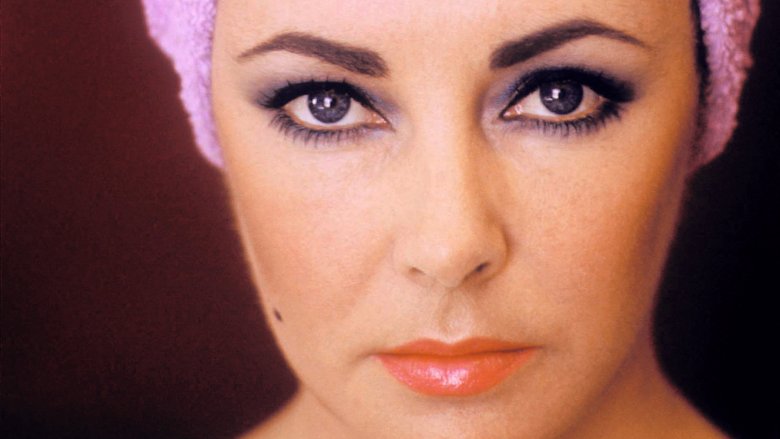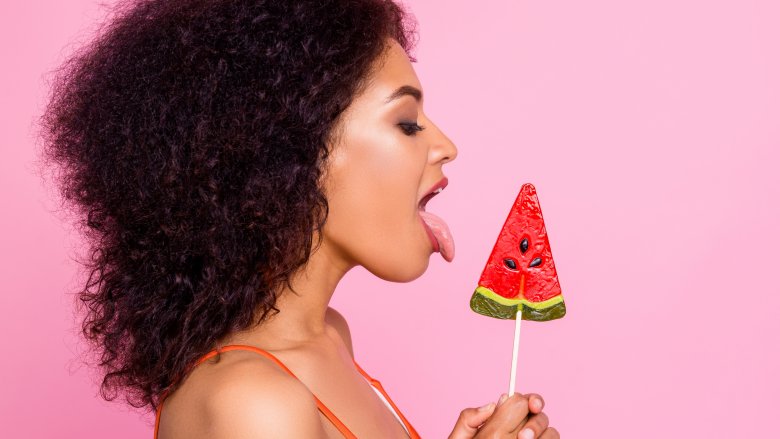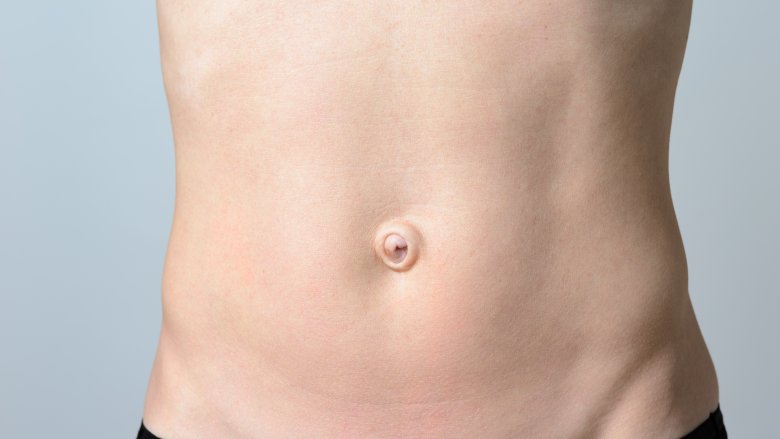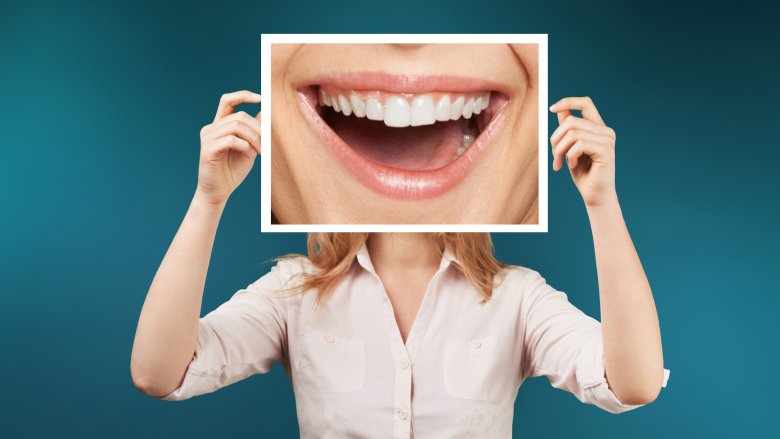Rare Body Features Most People Don't Have
Certain rare body features are present in few people across the globe. After all, humans are a particularly unique species, despite there being close to 9 million species living on the planet. "Obviously we have similarities [to apes]," Ian Tattersall, a paleoanthropologist at the American Museum of Natural History in New York, told BBC Future. "We have similarities with everything else in nature; it would be astonishing if we didn't. But we've got to look at the differences." From cooperation skills to the ability to produce art, people are, by definition, one of a kind.
Humans don't just differ from other species, though. We're also different from one another. Despite a worldwide population of over 7 billion people, each person has an entirely unique face. Bodies, too, are incredibly diverse. This means that we are all unique. Yet and still, there are some people who are especially extraordinary or more unique on a biological level. From extra body parts to heightened senses, these are some of the rarest features very few people have.
An extra rib is a rare body feature you might not even notice
Most people have 12 pairs of rib bones equaling 24 total ribs. However, there's a chance that some people actually have 25 ribs. One in 200 people have a rare body feature that's called a cervical rib, Health Beat, a publication of the Department of Surgery at Flushing Hospital in New York, revealed. "A cervical rib is present at birth and it forms above the first rib, growing at the base of the neck, just above the collarbone. You can have a cervical rib on the right, left, or both sides," the article revealed. It's possible you have one and don't even know it. This is because this extra rib doesn't always form completely and may just be a "thin strand of tissue fibers" that wouldn't even be present on an x-ray.
It may sound concerning, but cervical ribs are usually no big deal. If the rib puts pressure on blood vessels and nerves — a condition called thoracic outlet syndrome — it can be painful. Thankfully, it's treatable.
Having different colored eyes is a rare body feature amongst humans
You probably don't think twice before filling out your eye color on a form, but this seemingly simple question becomes a lot more complicated for someone with heterochromia, a rare body feature. Derived from the ancient Greek word "heteros" meaning different and "chroma" meaning color, a person with heterochromia has a difference in eye color, according to Medical News Today.
Three types of this condition are known to exist: complete, central, and partial. A person with complete heterochromia has two different colored eyes, like one brown eye and one blue eye. Two different colors in the same iris is considered central heterochromia. Lastly, partial heterochromia means just a part of the iris is a different color from the rest.
Heterochromia is most often genetic, but it can also occur as a result from various medical syndromes or even an eye injury. Heterochromia — whether acquired or genetic — is extremely rare. In the United States, fewer than 200,000 people have the condition.
Not many have the rare body feature red hair
Natural red hair is rarer than you'd think. "Worldwide, it occurs in only 2 percent of the population," Jacky Colliss Harvey revealed in Red: A History of the Redhead, "although it is slightly more common (2 to 6 percent) in northern and western Europe, or in those with that ancestry."
As Harvey explained, red hair is recessive. "In the great genetic card game, the shuffling of the deck that has made us all, red hair is the two of clubs," she wrote. "It is trumped by every other card in the pack." In order to have a child with this hair color, both parents need to possess the gene.
In the United States, it may not seem like red hair is all that unusual. However, that may be because a disproportionate amount of redheads are featured in American advertisements. While redheads only make up a tiny part of the population, one study (via HuffPost) found that 30 percent of ads feature the hair color. Plus, when you factor in people who've dyed their hair red, you can see how we've all been bamboozled into thinking this rare body feature is commonplace.
Gray eyes are a super rare body feature
Most people with red hair have either green, brown, or hazel eyes. A combination of red hair and blue eyes is even more rare because both traits require both parents to possess the gene, Medical Daily explained. And blue eyes are already pretty rare in and of themselves. Only an estimated 8 to 17 percent of the world's population has blue eyes. An even rarer eye color, though, is gray.
World Atlas reported that less than one percent of the human population is estimated to have gray eyes. "A low level of melanin in the front layer of the iris leads to gray eyes," the site explained. Although your chances are pretty slim of meeting someone with gray eyes, a rare body feature, your best bet is in Eastern and Northern Europe, where green eyes are also more prevalent. According to World Atlas, the only rarer eye colors than gray are red or violet, which is often the result of the already rare condition albinism, and heterochromia, two different eye colors.
Only about 40 people have the rare body feature golden blood
Only 0.6 percent of the American population is AB-negative, but that is not the rarest type in the world. According to the Australian Academy of Science, Rhnull — blood that entirely lacks Rh antigens — is much rarer. In 1961, an indigenous Australian became the first person discovered to have the blood type. Since then, only about 40 additional people have been identified as having the blood type, making it a truly rare body feature.
"There are nine active donors in the whole community of rare blood donors. Nine," Sandra Nance, the director of the American Rare Donor Program, told Smithsonian. Because Rhnull is compatible with other rare blood types in the Rh family, researchers and doctors have recognized its value. "It's the golden blood," Thierry Peyrard, the director of the National Immunohematology Reference Laboratory in Paris, France, told Mosaic Science. Although blood donors are kept anonymous, some scientists have attempted to locate Rhnull donors to ask them for their blood directly, according to the publication. Golden blood, indeed.
This rare body feature perfectly regulates cholesterol
While many Americans may be trying to keep their cholesterol under control, some will never have to worry about it. Those folks have a mutation of the PCSK9 gene. The U.S. National Library of Medicine's Genetics Home Reference explains that this gene "provides instructions for making a protein that helps regulate the amount of cholesterol in the bloodstream." When this gene is mutated in a particular way, it keeps bad cholesterol very low.
When one woman realized she possessed the rare body feature that renders her incapable of developing high cholesterol, she said she "really didn't understand" it. "But now I'm watching ads on TV [for cholesterol-lowering drugs], and it's like, 'Wow, I don't have that problem,'" she shared (via Nature). According to The New York Times, only one other person has what the publication called a "double dose of the mutation" — one that was inherited from both parents. However, 2.5 percent of black people have since been found to have a singly-mutated PCSK9 gene and 3.2 percent of white people have a slightly singly-mutated gene. Both of these abnormalities help to regulate cholesterol, albeit not as effectively as a double mutation.
A small hole near the ear is a rare body feature to have
In the United States and United Kingdom, a tiny percentage — 0.1 to 0.9 percent — of babies are born with what's called a preauricular pit, a rare body feature. You may think it looks a little like a gill — and that's even what some evolutionary biologists theorize they were at one point. This pit is "essentially a sinus tract traveling under the skin that doesn't belong there; it's marked by a tiny opening to the tract, right in front of the ear and above the ear canal," the Children's Hospital of Philadelphia (CHOP) explained. These pits form during the sixth week of gestation and, in most cases, are only present on one ear.
According to CHOP, "the malformation is not associated with hearing impairments, and only rarely associated with a genetic syndrome involving other problems." However, preauricular pits can be prone to cysts and infections. In such cases, the pit may be removed to prevent recurring problems. Otherwise, though, you can leave this mysterious orifice alone.
Super color vision is a rare body feature only some women have
Our ability to see color is all thanks to cells in our eyes called cones, Discover explained. Typically, people have three types of cones to help them communicate with the brain and, therefore, see colors. However, researchers believe there's a percentage of people called "tetrachromats" who actually have four cones, a rare body feature. These people would be able to see 100 million different colors.
Neuroscientist Gabriele Jordan of Newcastle University and her team spent years searching for tetrachromats and, in 2010, they finally found someone who fit the bill, as reported by BBC Future. In subsequent years, more people — interestingly all women — were discovered to see colors that many of us are unable to decipher. The condition may, in fact, be unique to women.
Superior color vision sounds pretty magical, but it's not always a fun experience. "The grocery store is a nightmare," tetrachromat Concetta Antico admitted to BBC Future. "It's like a trash pile of colour coming in at every angle." Despite seeing so many colors, Antico admitted that white is her favorite color "because it is so peaceful and restful for [her] eyes."
Ocular albinism a rare body feature that's affects the eyes
Because albinism is often lumped into one category, you may not know that there are actually two different types of the condition: oculocutaneous (known as OCA) and ocular albinism (aka OA). Although both forms can have an effect on hair, skin and eye pigmentation, OCA primarily affects the pigmentation of the skin whereas OA primarily affects the eyes. According to the National Organization for Albinism and Hypopigmentation, the skin and hair of people with ocular albinism "may appear similar or slightly lighter than that of other family members."
Although albinism is a rare body feature to have, OA is even rarer. The Vision of Children Foundation revealed that, while officially unknown, "educated estimates vary between 1 person in 20,000 to 1 person in 50,000." Ocular albinism doesn't just alter the color of a person's irises, but can also cause reduced vision, sensitivity to light, and other, more serious eye conditions.
What causes the rare body feature of a double row of eyelashes?
With magnetic false lashes, we can all have lush, layered eyelashes. People with distichiasis, though, already have this. The rare body feature distichiasis is, according to the American Academy of Ophthalmology, a "condition in which an extra row of eyelashes emerges from the ducts of meibomian glands." It results from a genetic mutation of the FOXC2 gene. Elizabeth Taylor had this mutation to thank for her voluminous lashes. According to the biography Elizabeth by J. Randy Taraborrelli, Taylor's mother took the diagnosis in stride, thinking, "Well, now that doesn't sound so terrible at all."
Before you get too jealous of people with this rare double row of lashes, though, you should know it comes with a few cons. "What happens in distichiasis is that a hair grows where there is supposed to be an oil gland on what's considered the wet part of the eyelid," Aaron Fay, an ophthalmic plastic surgeon at Massachusetts Eye and Ear Infirmary in Boston, explained to NBC News. This can cause tearing, eye irritation, and, in some cases, negatively impact a person's vision.
One rare body feature cause some people to be super-tasters
Science has shown that genetics play a role even in tastebuds. Only about 25 percent of the population can be categorized as what researcher Linda Bartoshuk dubbed a "super-taster," the Harvard T.H. Chan School of Public Health's The Nutrition Source revealed.
These super-tasters have more visible taste papillae — tiny dots on the tongue — than do non-tasters. This rare body feature makes them more sensitive to the taste of certain foods — like those that are bitter, sweet, or salty. Because super-tasters also have more pain receptors than non-tasters, they generally do not like spicy food. They're also less likely to smoke and don't typically like alcohol. Unfortunately, though, they also don't consume as many vegetables. This is because veggies tend to have a bitter taste. Nevertheless, The Nutrition Source explained that super-tasters, especially those who are women, "tend to have superior cardiovascular profiles" and a lower BMI. Considering super-tasters also don't love sweet and fatty foods, these things may very well be linked.
Outie belly buttons are rare body features
Chances are you have an innie belly button. Jiri Hulcr, a postdoctoral research assistant, along with a group of scientists at North Carolina State University founded the Belly Button Biodiversity project — it's a thing — and, as part of their project, they studied, of course, belly buttons. Of the participants, only four percent reported having an outie belly button, a rare body feature.
Barry Eppley, an Indiana-based plastic surgeon, told Everyday Health that several things — from the belly button itself to the fat beneath it — determine which kind of belly button you'll end up with. Although this means you don't get to choose between an innie and outie, some have turned to plastic surgery to get their "ideal" belly button. Richard Chaffoo, president of the San Diego Plastic Surgery Society and chief of plastic surgery at Scripps Memorial Hospital in Encinitas, Calif., told the publication, "The popularity of low-rise jeans and midriff tops has lead to an enormous increase in the number of requests for belly button revision surgery in the past few years." Most of the people opting for cosmetic belly button revision surgeries, or umbilicoplasties, go from outies to innies.
A few people have the rare body feature of unbreakable bones
Apparently there are people who don't have to stress over their calcium intake. People with a mutation in the LRP5 gene have high bone density and, as such, aren't at risk of developing osteoporosis, a study published in The New England Journal of Medicine revealed. The very few people — all from one family from Connecticut who have been identified as having the mutation, a rare body feature — experienced only one negative symptom: "difficulty staying afloat while swimming."
Richard P. Lifton, chair of the Department of Genetics, told Yale Medicine Magazine, "If there are living counterparts to the [hero] in Unbreakable, who is in a terrible train wreck and walks away without a single broken bone, they're members of this family." He continued, saying, "They have extraordinarily dense bones and there is no history of fractures. These people have about the strongest bones on the entire planet." Their bones are so strong, in fact, that scientists began attempting to create a drug similar to the mutation in an effort to treat and even prevent osteoporosis.
However, in 2006, The Scientist reported that people with this genetic condition weren't limited to just one family but were found around the country, including in Nebraska.
An absence of wisdom teeth is a truly rare body feature
Wisdom teeth may have once been important, but, these days, they're kind of just a pain. Southern Illinois University's Robert Corruccini told New Scientist that when third molars (aka wisdom teeth) try to break through the gums, they often run out of space. This can lead to them becoming impacted. With our mouths unable to solve the issue of overcrowding themselves, we turn to oral surgeons to rip those "wise" teeth out.
While not everyone will need extractions, an estimated 5 million people will go through the surgery each year. Some opt to get their third molars taken out before they have time to become a problem. "You might not have symptoms now, but you can't assume it's gonna be that way for the rest of your life," Ray White, an oral surgeon at the University of North Carolina, told Vox.
Interestingly, though, there are people that won't need to think twice about their wisdom teeth. Why? Simply because they don't have them. An estimated 35 percent of the population lack wisdom teeth altogether, making it a rare body feature... or lack thereof. Now that makes us jealous.
